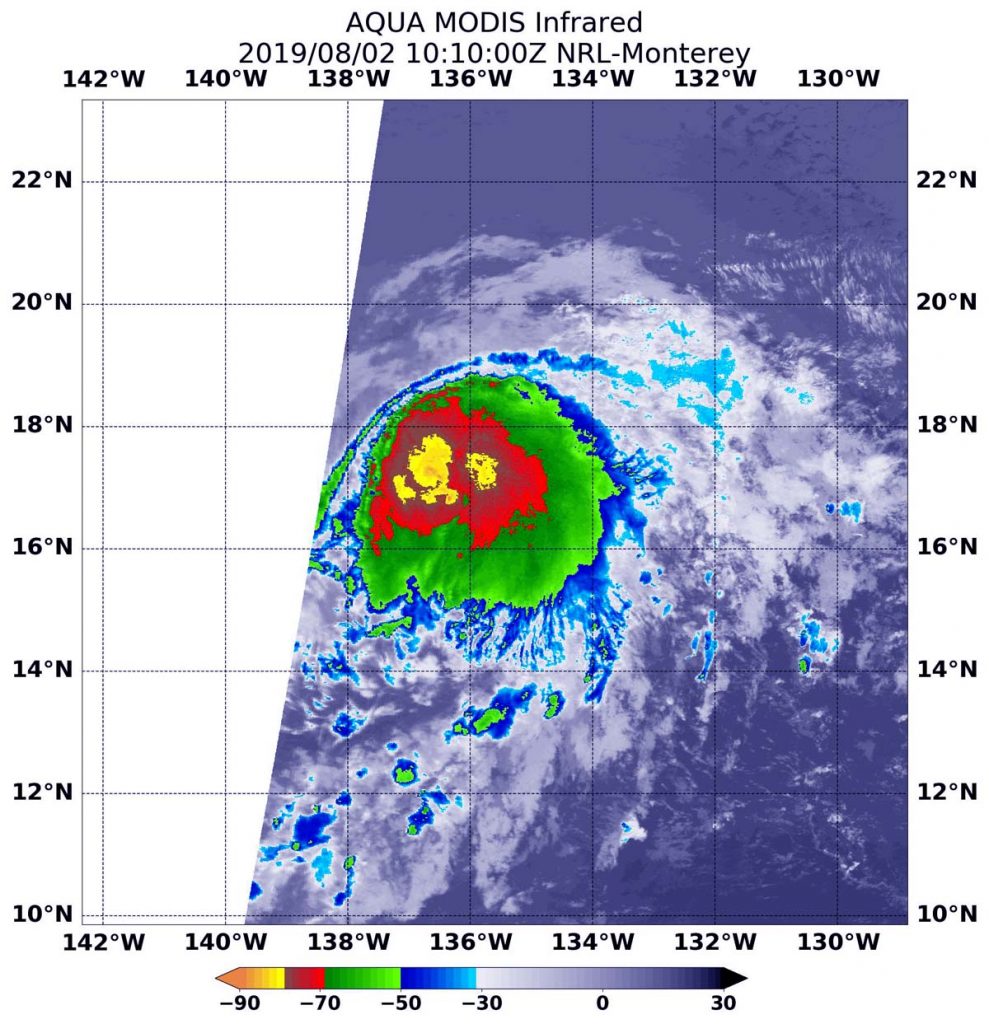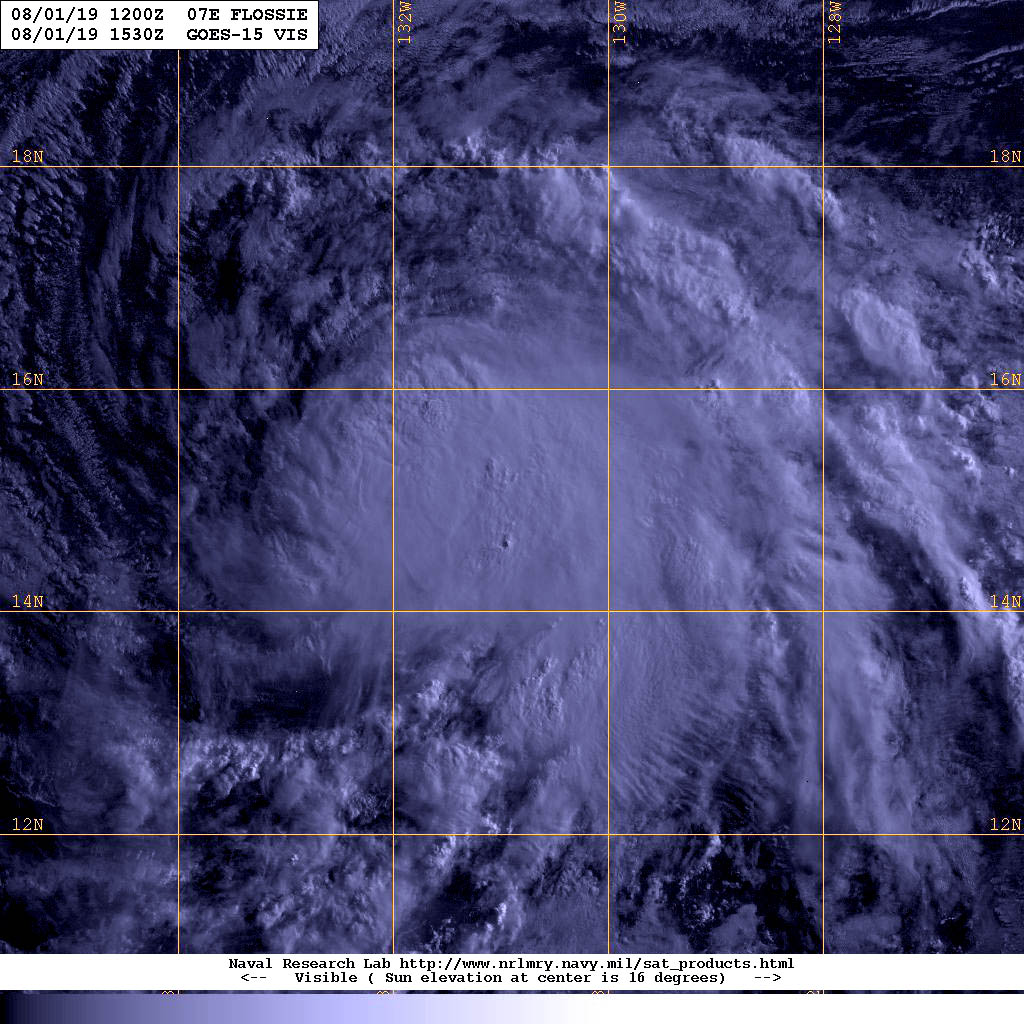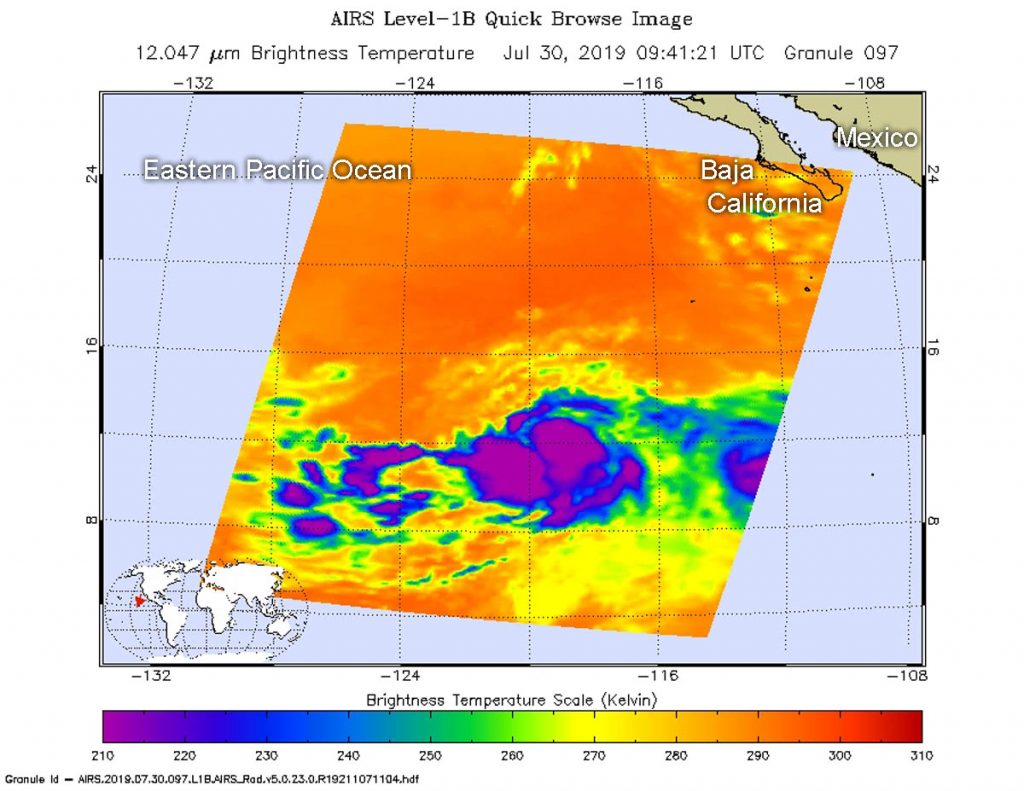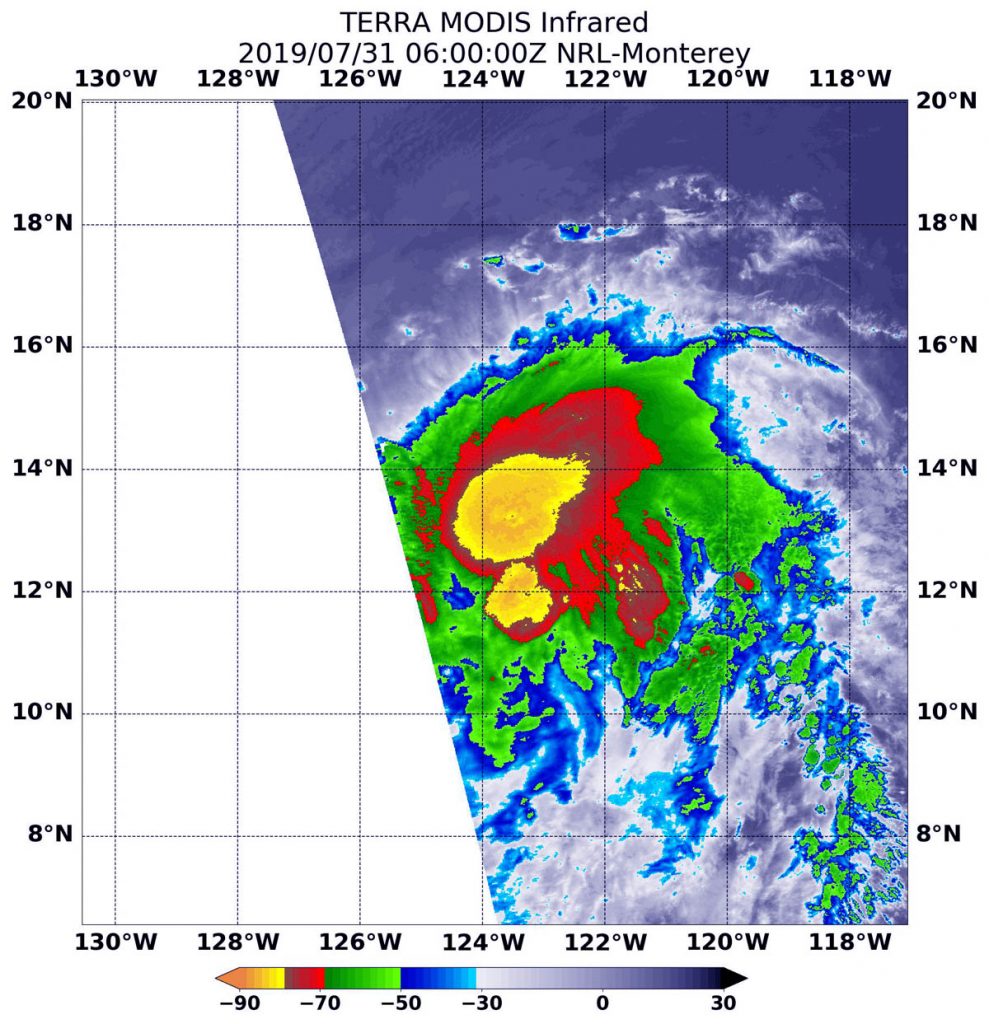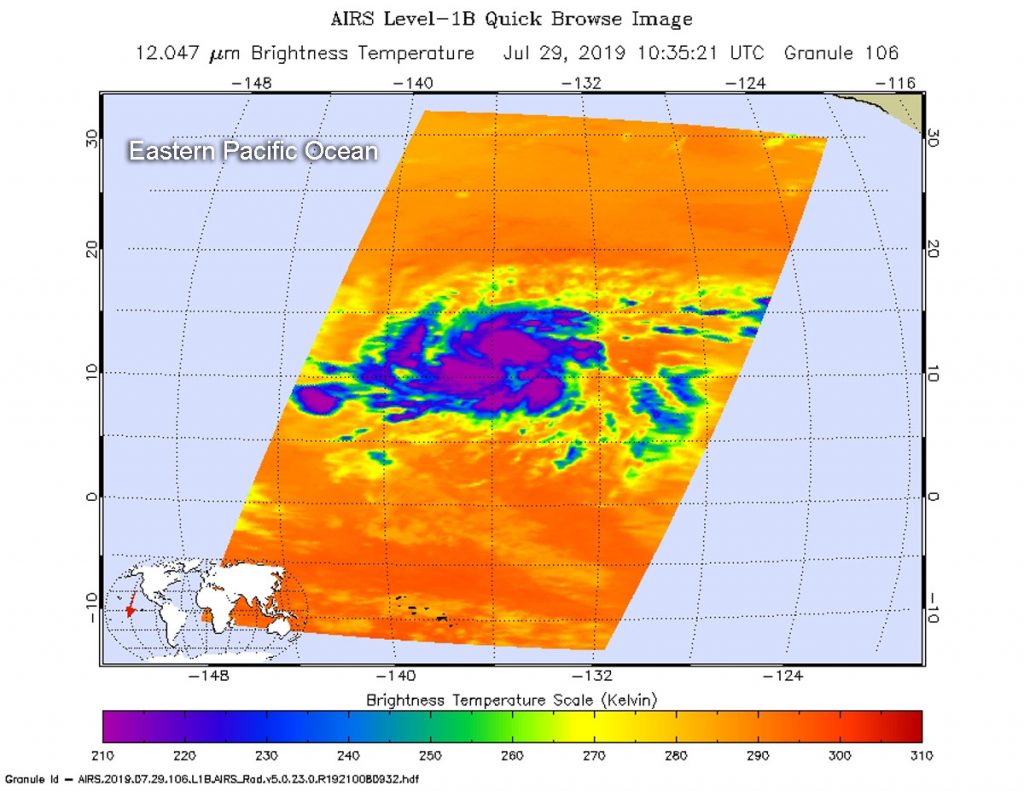Aug. 06, 2019 – NASA Sees Flossie Now a Remnant Low Pressure Area
Former Hurricane Flossie was nothing more than a remnant low pressure area early on Tuesday, August 6. Infrared imagery from NASA’s Aqua satellite found just a few scattered areas of cold clouds in thunderstorms in the remnants northeast of the Hawaiian Islands.

NASA’s Aqua satellite uses infrared light to analyze the strength of storms by providing temperature information about the system’s clouds. The strongest thunderstorms that reach high into the atmosphere have the coldest cloud top temperatures.
On August 6 at 4:40 a.m. EDT (0840 UTC), the Moderate Imaging Spectroradiometer or MODIS instrument that flies aboard NASA’s Aqua satellite gathered infrared data on Flossie.
MODIS found just a few scattered areas of cold clouds in thunderstorms in the remnants, northeast of the Hawaiian Islands. Those thunderstorms had cloud top temperatures as cold as minus 50 degrees Fahrenheit (minus 45.5 Celsius).
The NHC issued the final advisory on Flossie at 11 p.m. EDT on Aug. 5 (0300 UTC on Aug. 6). At that time, center of Post-Tropical Cyclone Flossie was located near latitude 20.8 degrees North and longitude 154.6 degrees West. That’s about 85 miles (135 km) north-northeast of Hilo, Hawaii. The post-tropical cyclone is moving toward the west-northwest near 12 mph (19 kph). A gradual turn toward the north-northwest is expected until dissipation on Wednesday.
Maximum sustained winds are near 35 mph (55 kph) with higher gusts.
Flossie is expected to gradually degenerate over the next day or so and dissipate by Wednesday.
For updated forecasts, visit: https://www.nhc.noaa.gov


